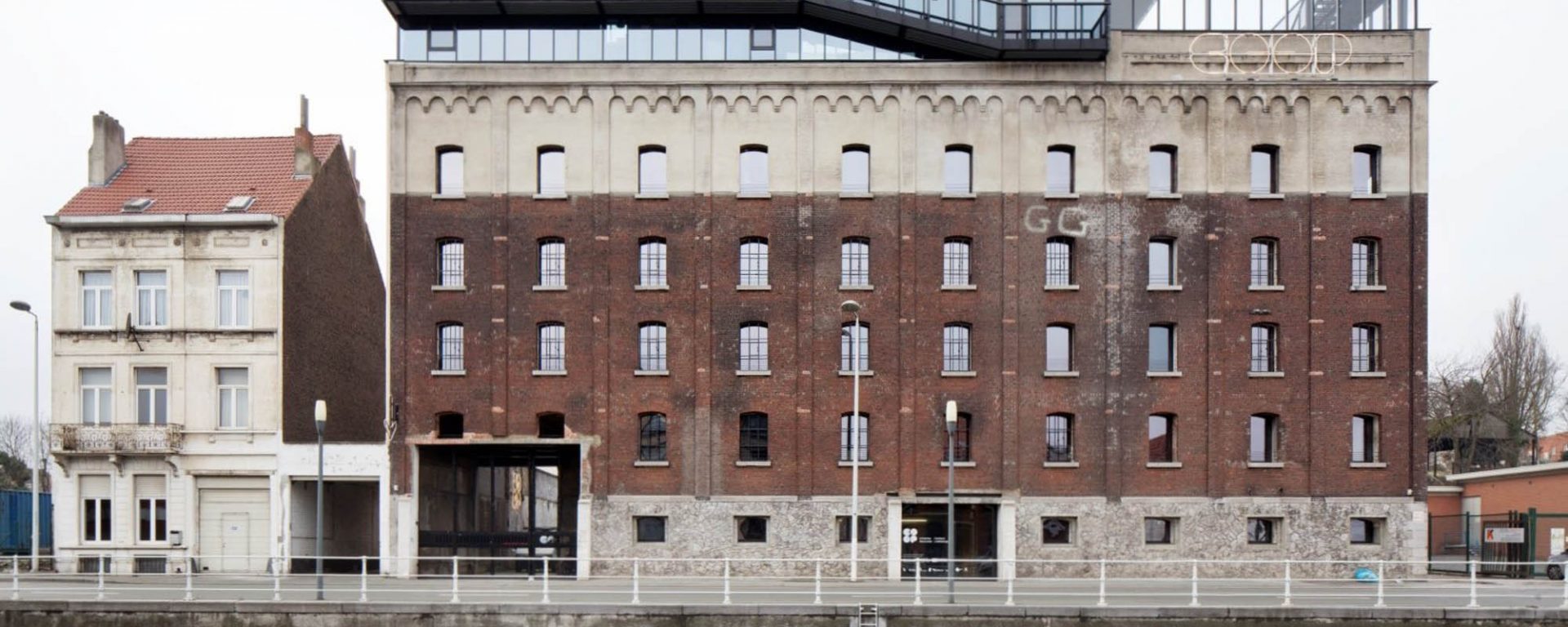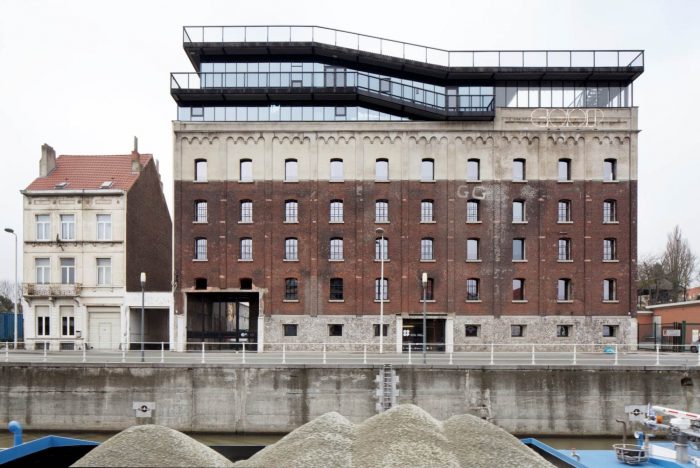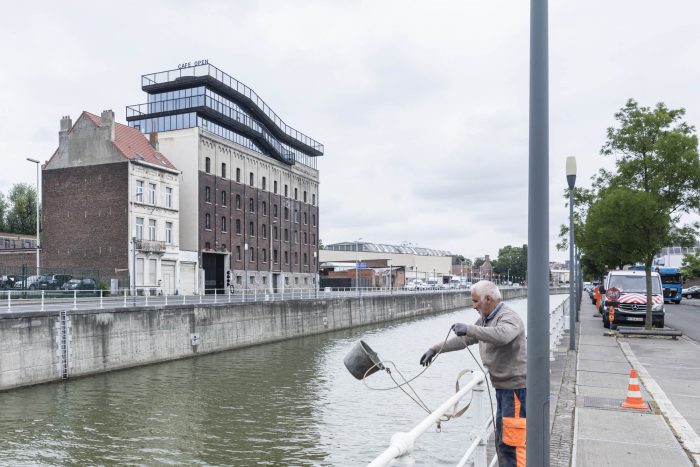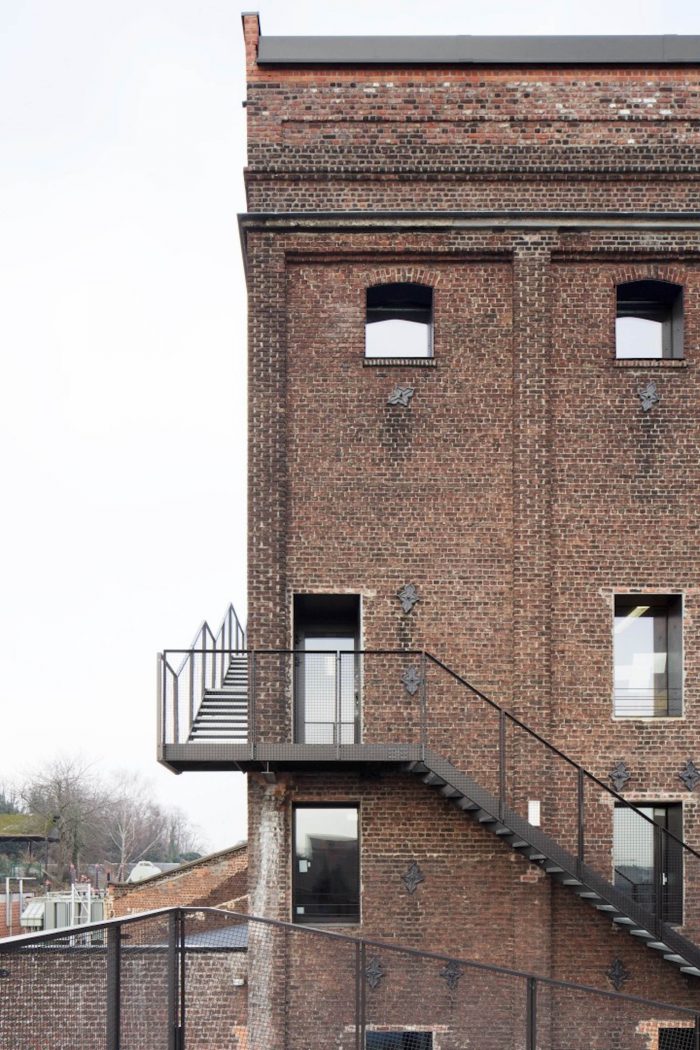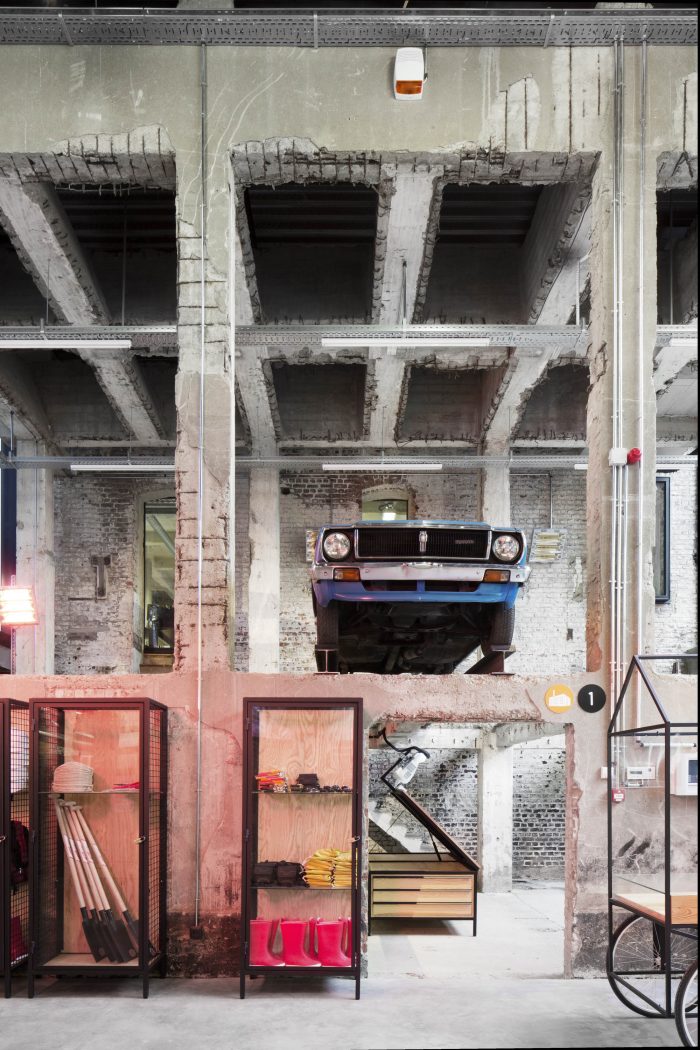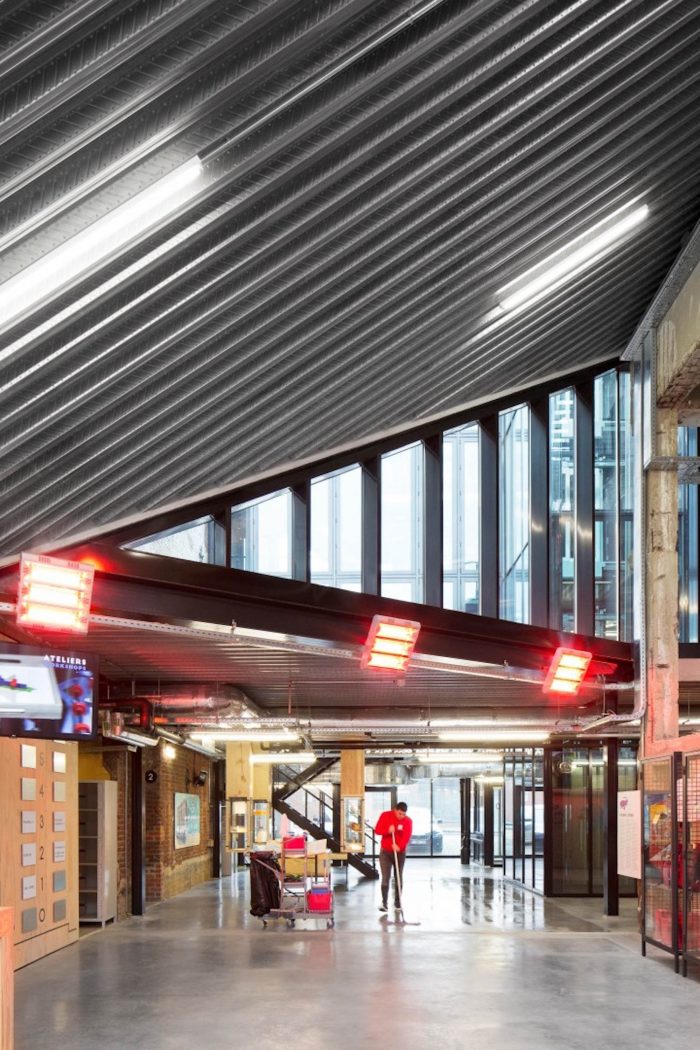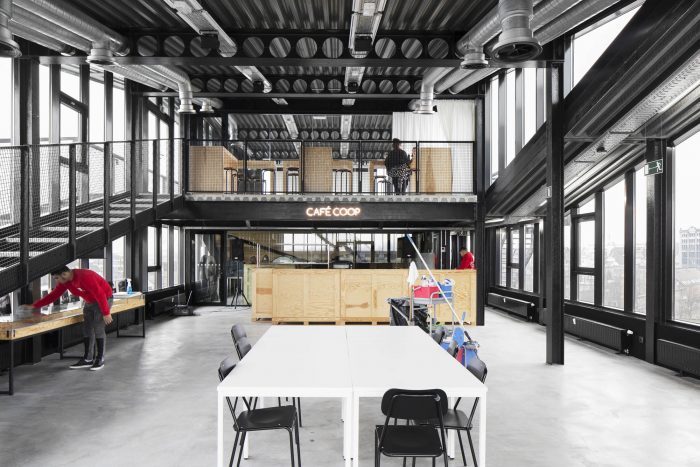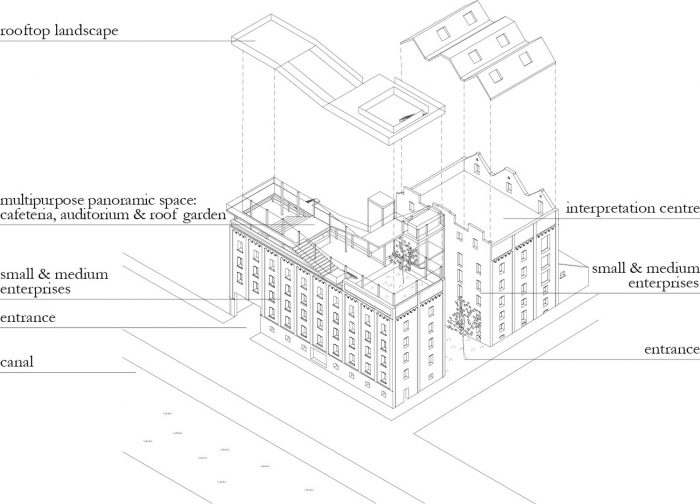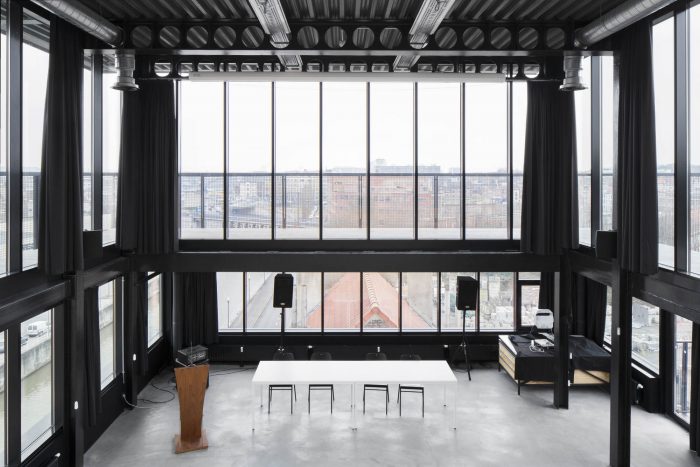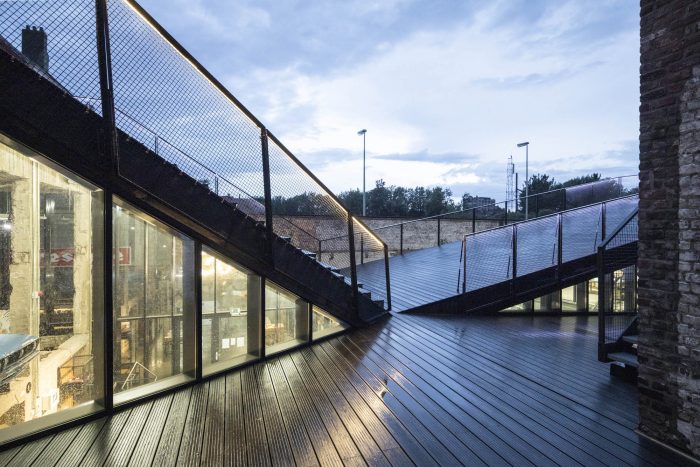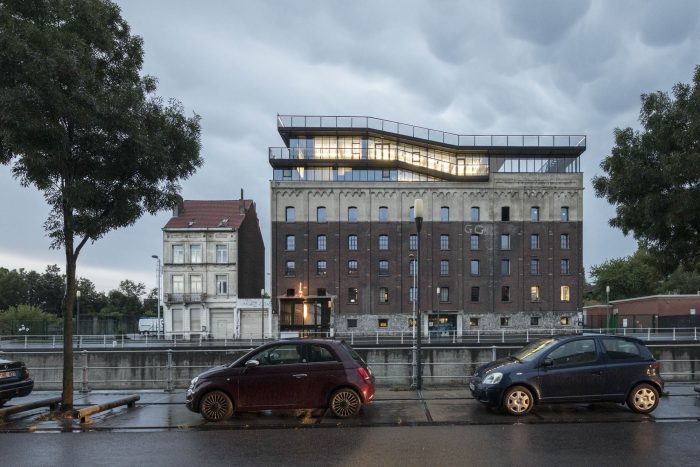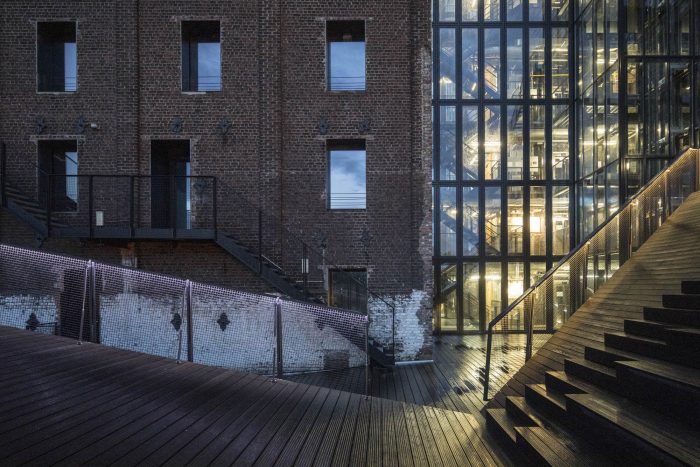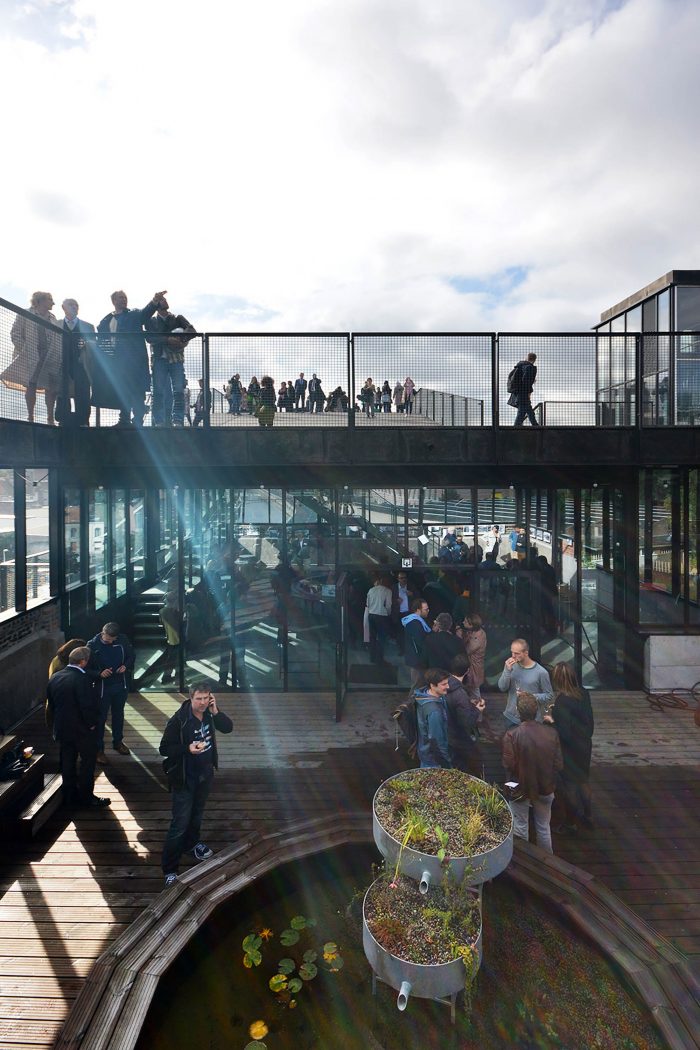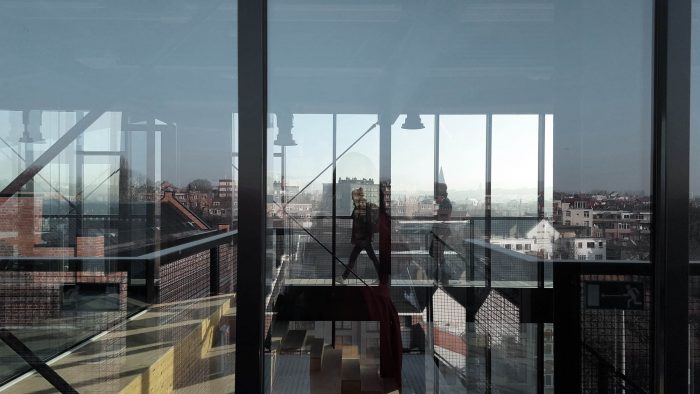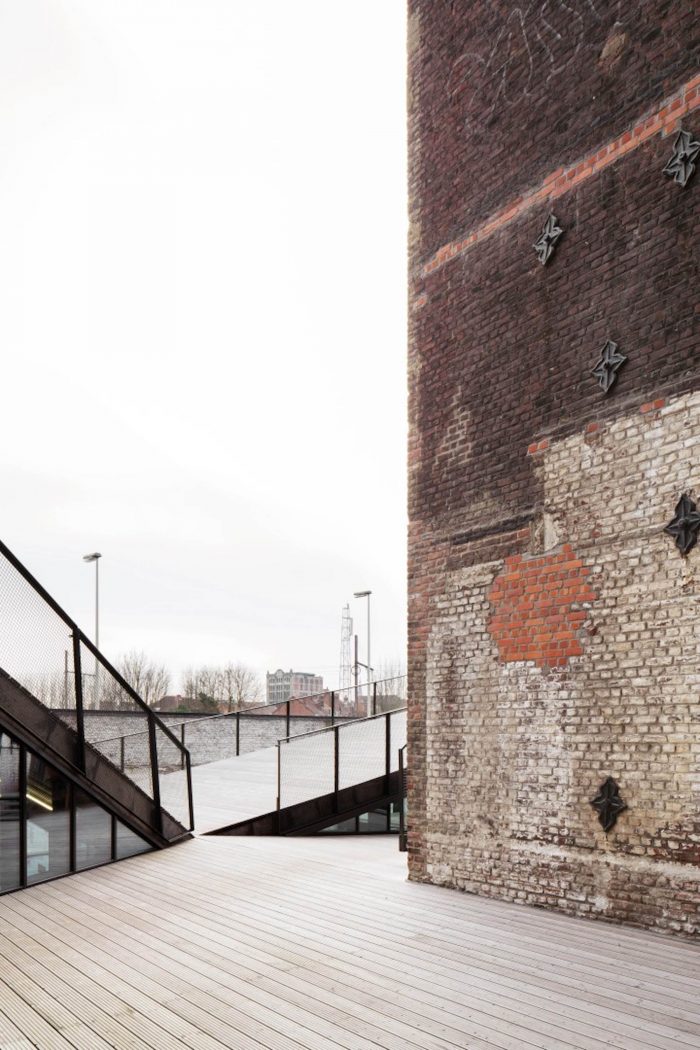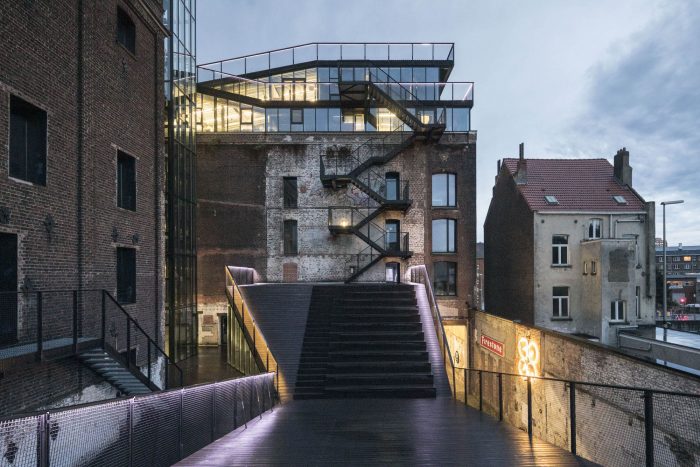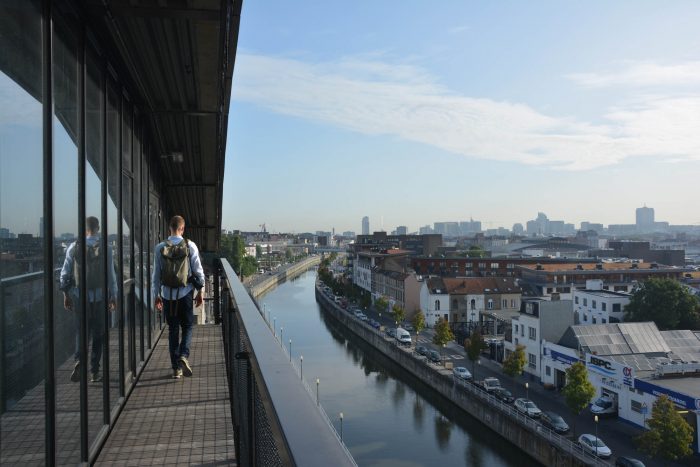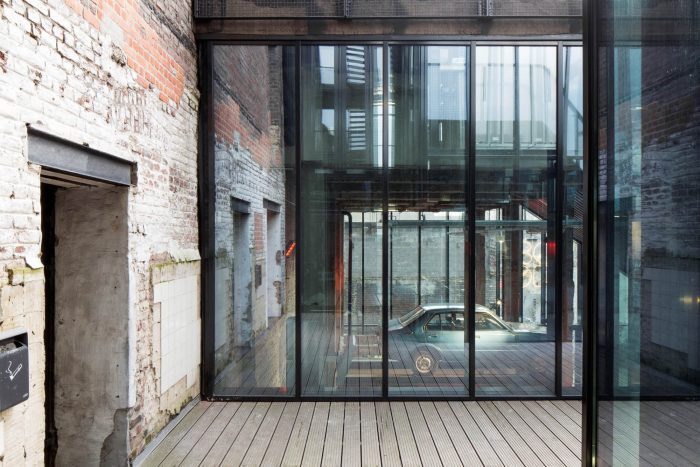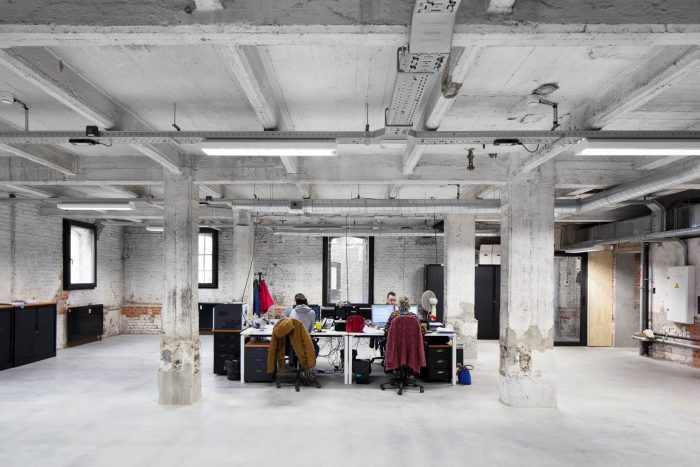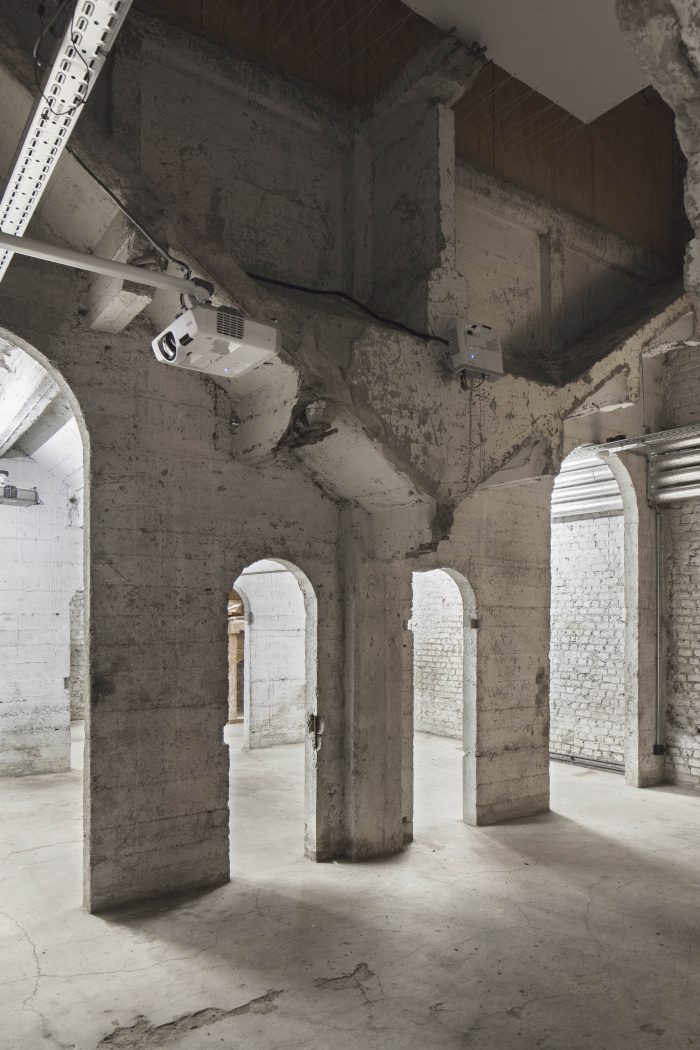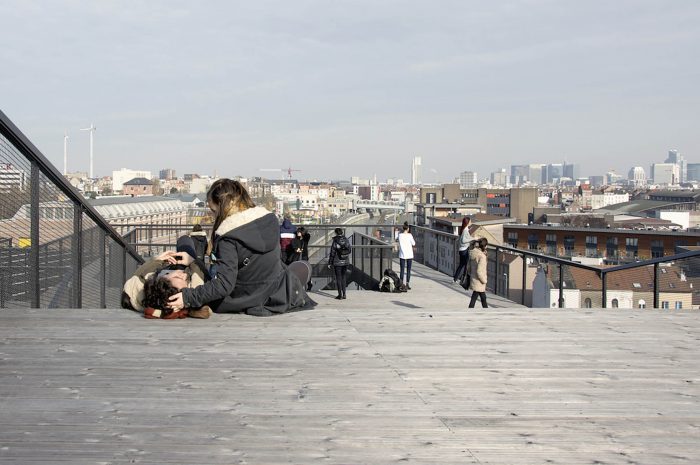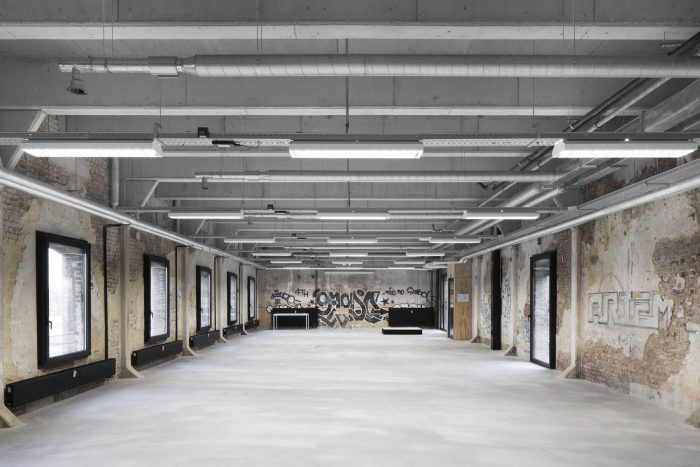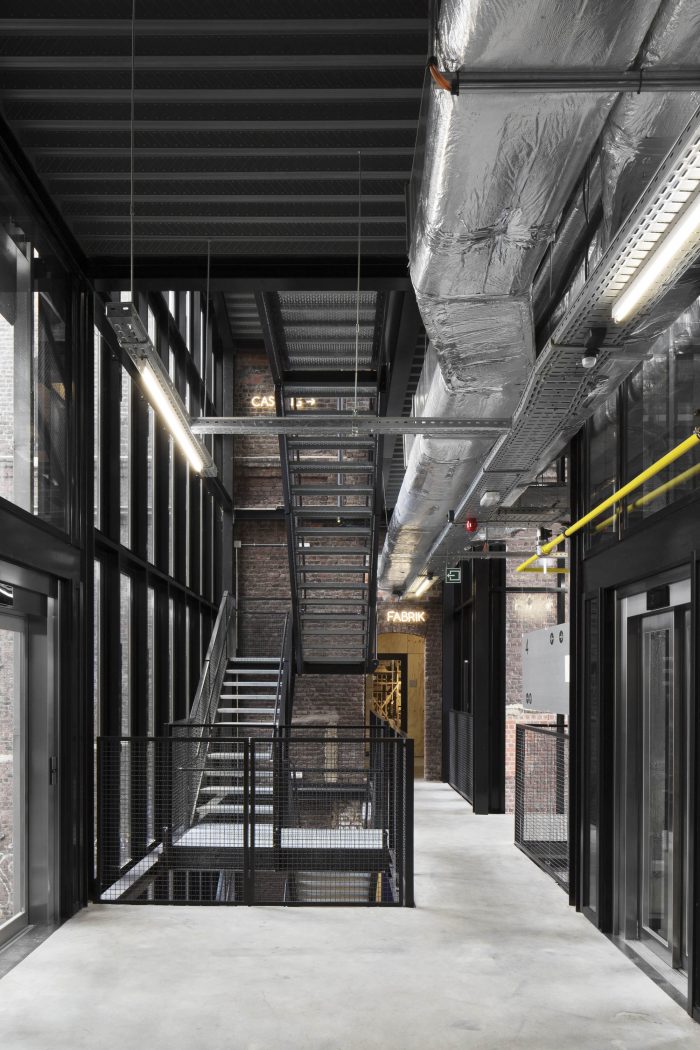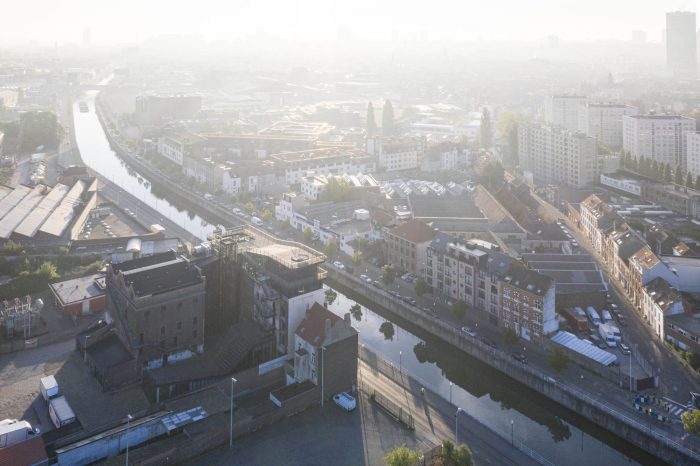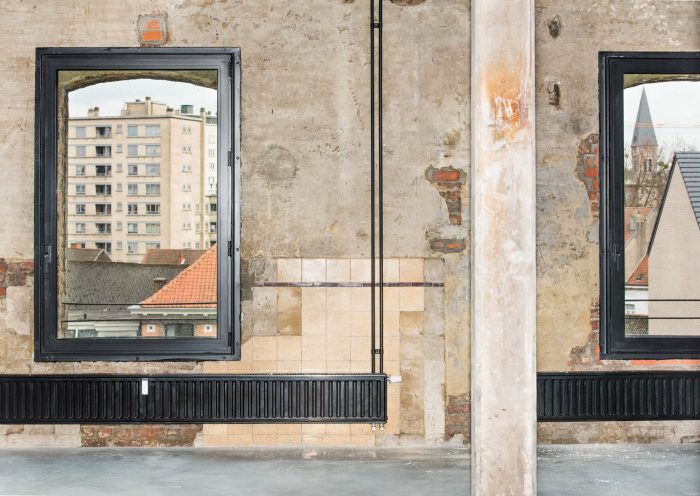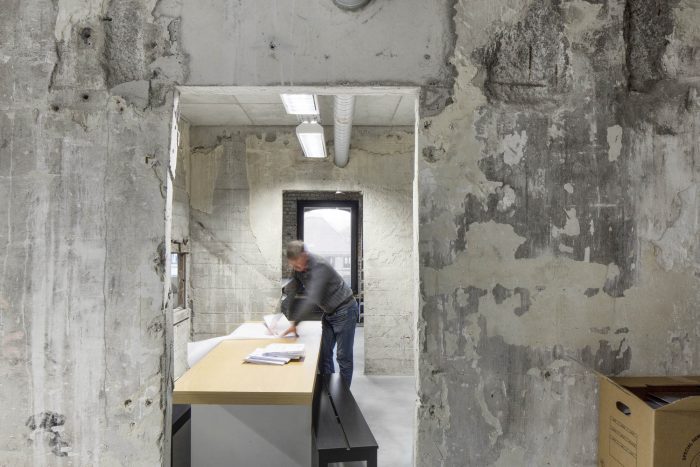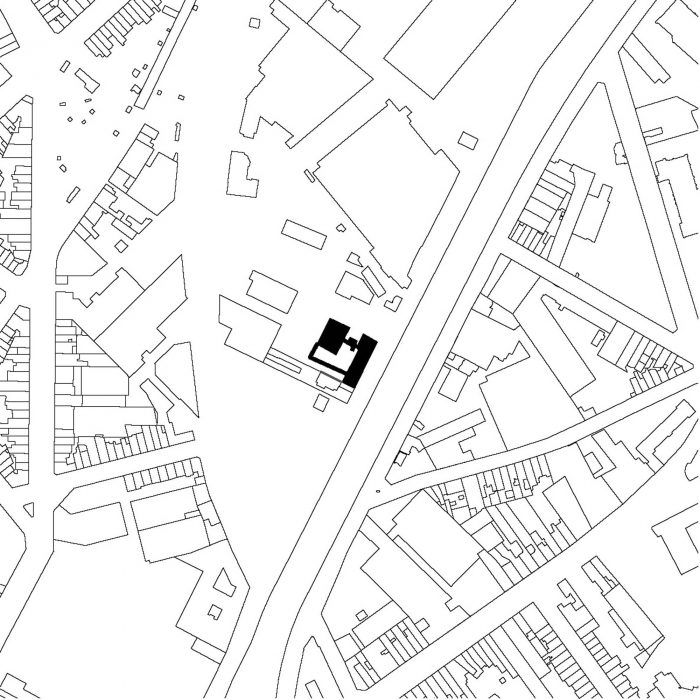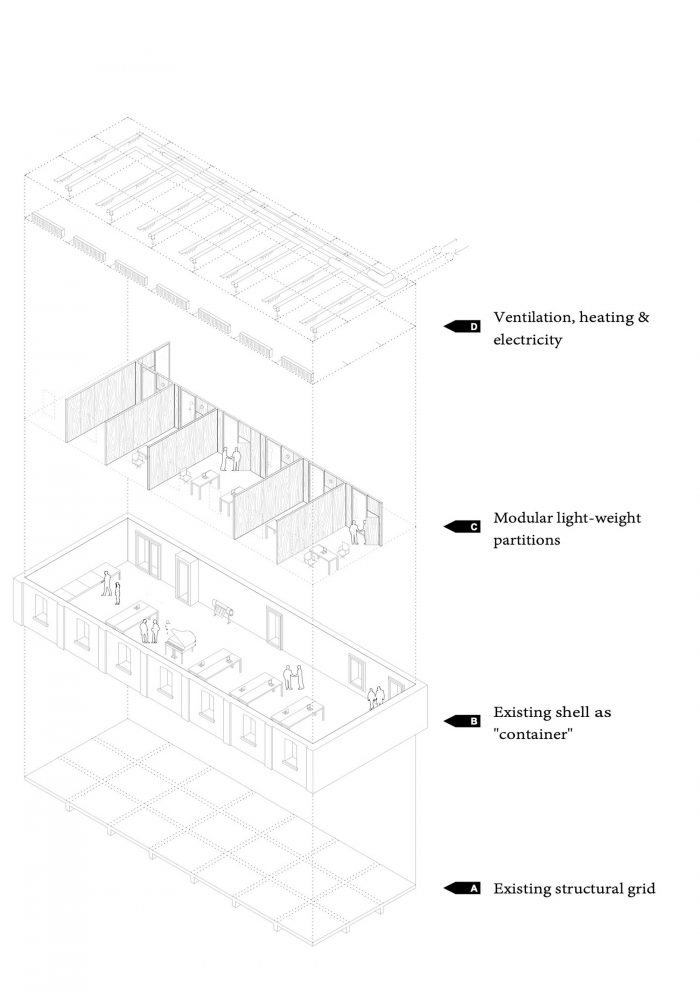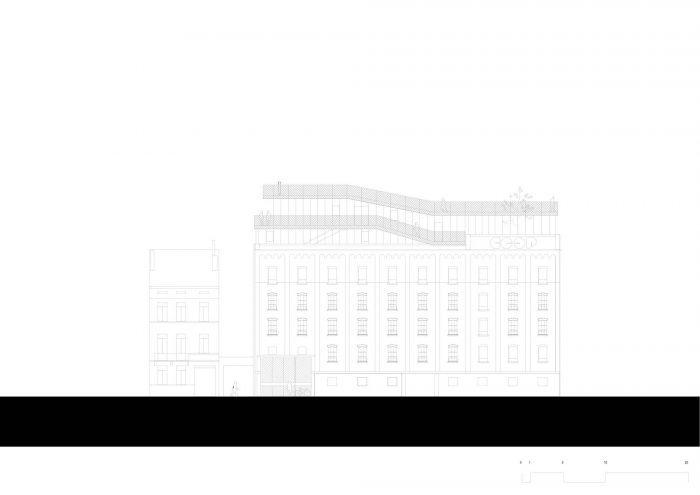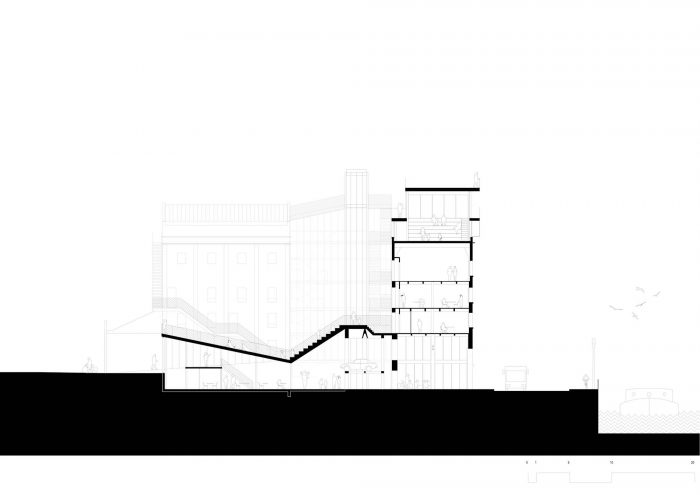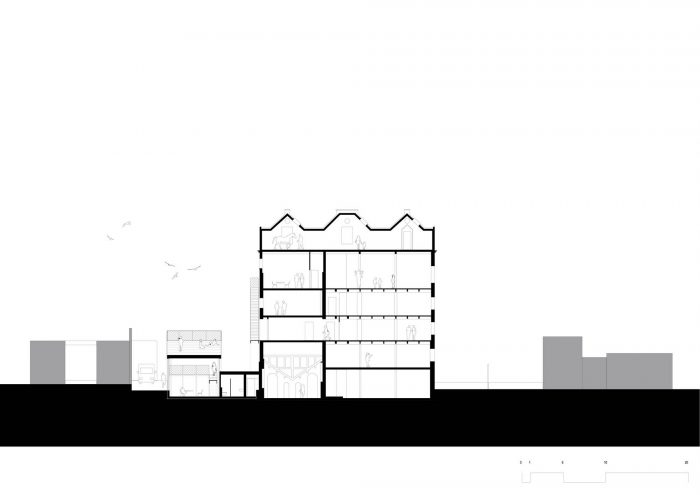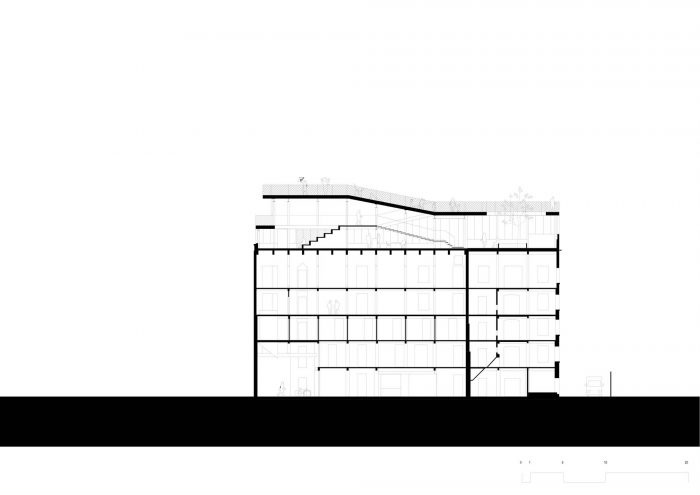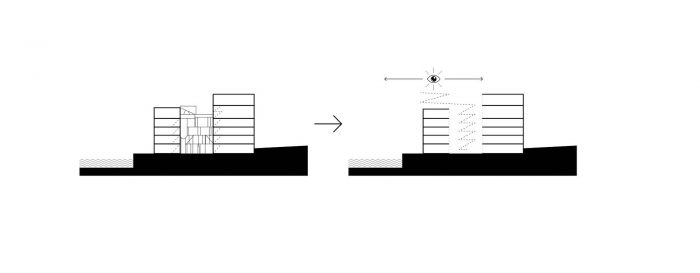COOP的特殊挑战是当地对文化和社会可持续性的需求,以及以创新方式重新利用一体化程度不高的城市结构。在这种情况下,该项目旨在产生附加的社会价值。我们所追求的城市更新不仅仅是对建筑遗产的保护,它构成了项目本身的基本挑战。在安德莱赫特运河沿岸的老工厂里,有一个中小型企业(SMEs)的孵化器,连接着一个口译中心和一个创新船厂。
The peculiar challenges of COOP are the local needs for cultural and social sustainability and innovative reuse of a poorly integrated urban fabric. In that context, this project aims to generate an added social value. The urban renewal we aimed at goes beyond the preservation of built heritage, it constitutes the essential challenge of the program itself. The old mill along the Canal in Anderlecht hosts today an incubator for Small & Medium Entreprises (SMEs) linked with an interpretation centre and an innovation shipyard.
在孵化器旁边,船厂将传统和创新的内河船只和驳船的设计和制造方法结合起来,作为专业培训和再就业的框架。解释中心通过广泛的媒体图书馆和多方面的展览、研讨会和其他活动的安排,提供了对街区过去和未来遗产的解读。
Next to the incubator, the shipyard associates traditional and innovative methods for the design and manufacturing of boats and barges for inland waterways, as a frame for professional training and reinsertion. The interpretation centre offers a reading of the past and future heritage of the neighbourhood through an extensive library of media and multifaceted programming of exhibitions, workshops, and other events.
因此,我们认为,建筑师的使命是提出一个高质量的创新建筑,以使合适的方案、合适的位置和合适的资源在社会层面产生有益的影响–让建筑成为安德莱赫特市这样的贫困地区再开发的引擎、动力。
Therefore, we believe that the mission of the architect is to propose a qualitative and innovative architecture in order to enable the right programme, the right location, and the right resources to generate a beneficial impact on a social level – to allow the building to become an engine, a driving force in the redevelopment of an underprivileged area such as the municipality of Anderlecht.
一种创新的修复方法被用来作为生态循环和文化可持续性的形式,对工业遗产进行适应性再利用。
– 该计划的元素不被视为固定的 “空间 “或 “建筑”,而是作为不断发展的 “项目”,相互之间不断互动。
– 时间(以及变化)而不是空间被视为建筑的主要背景。因此,灵活性和永久的可调整性成为关键的品质。
– 该项目在地方和超地方的层面上进行互动,并呈现出对邻里和城市的低门槛。
An innovative restoration approach has been used as a form of ecological recycling and cultural sustainability for the adaptive re-use of the industrial heritage:
– The elements of the program are not considered as fixed “spaces” or “buildings”, but rather as evolving “projects” in constant interaction with each other.
– Time (and therefore change) rather than space is taken as the main context of architecture. Flexibility and permanent adjustability, therefore, become key qualities.
– The project interacts on both local and supra-local levels and presents a low threshold towards the neighbourhood and the city.
现有的两栋建筑被剥离出来,作为大型灵活的集装箱使用。在这两栋建筑之间–在一个 “轻建筑 “的外壳内–插入了所有的辅助功能:楼梯、电梯、技术、服务空间等。在底层,开放式的接待和管理空间将项目与社区联系起来。一个全景屋顶景观包括一个餐厅、屋顶花园和露台,作为运河边的灯塔和连接场地与城市的地标。
The two existing listed buildings are stripped and used as large flexible containers. In between these two – within a “light architecture” shell – all the ancillary functions are inserted: stairs, elevators, techniques, service space, etc. On the ground floor, the open-plan reception and administration spaces link the project to the neighbourhood. A panoramic roofscape including a restaurant, a roof garden, and terraces, functions as a lighthouse along the canal and a landmark that links the site with the city.
建筑师:BOGDAN & VAN BROECK
面积: 5099 m²
年份:2016年
摄影:Luca Beel, Laurian Ghinitoiu, Artur Eranosian
设计团队:H. Bosteels, M. Czvek, M. Lefeber, T. Rigby, L. Van Innis, S. Vander Goten
技术:CES
场景设计:Håkan Harrysson – Svensk Idé
文化专家:Hendrik Vanmolkot
结构顾问:NEY & partners
城市:Anderlecht
国家:比利时
Architects: BOGDAN & VAN BROECK
Area: 5099 m²
Year: 2016
Photographs: Luca Beel, Laurian Ghinitoiu, Artur Eranosian
Design Team:H. Bosteels, M. Czvek, M. Lefeber, T. Rigby, L. Van Innis, S. Vander Goten
Techniques :CES
Scenography:Håkan Harrysson – Svensk Idé
Cultural Expert :Hendrik Vanmolkot
Structure Consultants:NEY & partners
City:Anderlecht
Country:Belgium

